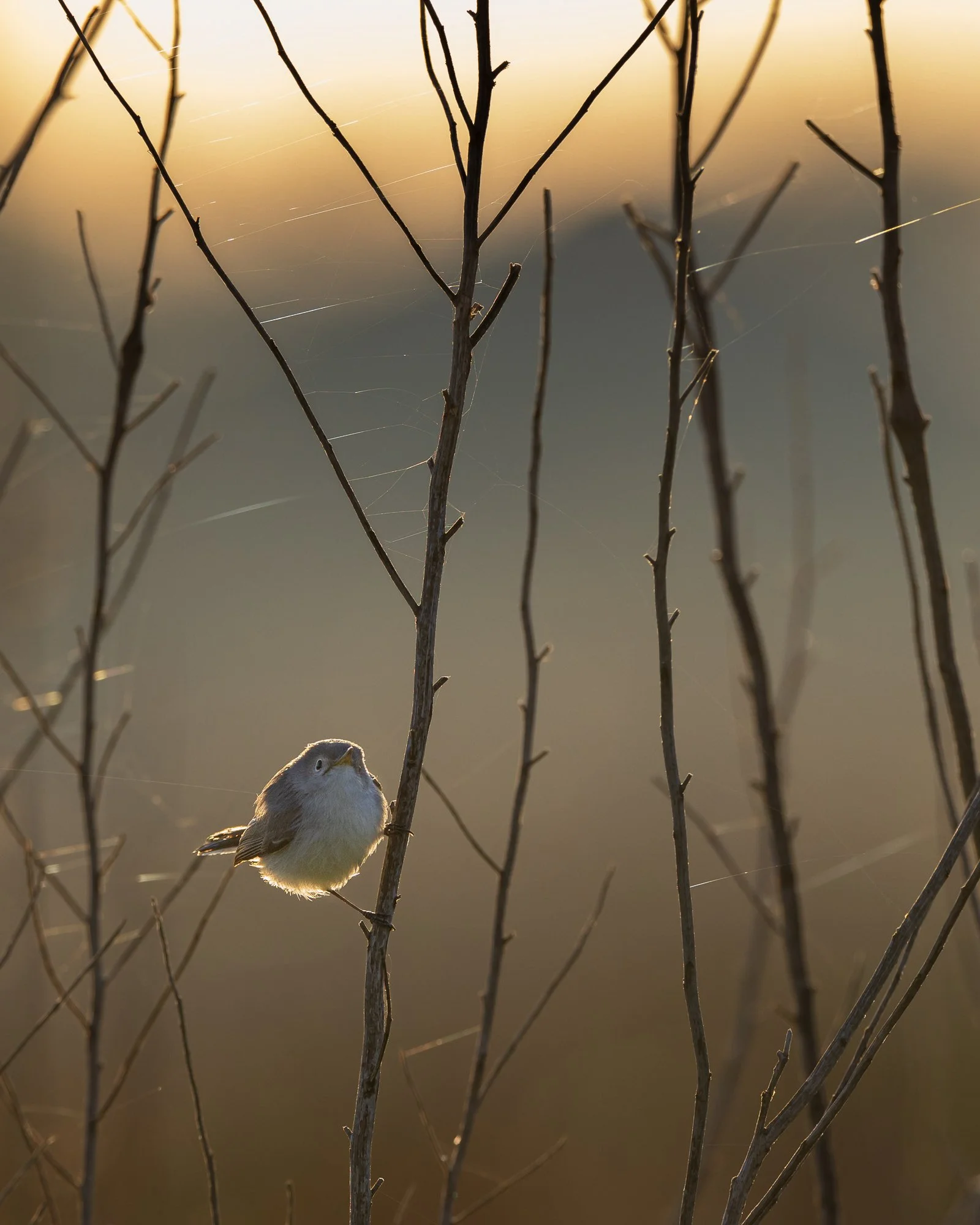Small, Agile, Extraordinary - The Blue-gray gnatcatcher
At first light, I watched a Blue-gray Gnatcatcher (Polioptila caerulea) glide gracefully toward a slender branch, its tiny wings aglow with the warm hues of sunrise. It was a fleeting moment, but it felt profound—a reminder of life’s constant motion and the quiet beauty of change. This little bird, barely 4 inches long, seemed to carry the wisdom of nature as it reached for a branch adorned with glistening strands of spider silk. It was a symbol of transformation, a lesson wrapped in feathers.
Tiny, Yet Mighty
Blue-gray Gnatcatchers, though tiny, demonstrate resilience and early adaptability, starting their breeding season as early as March in warmer regions like Florida.
Blue-gray Gnatcatchers are small but mighty. Weighing less than a third of an ounce, they’re proof that size doesn’t define impact. These tiny songbirds are energetic and resourceful, and they know how to stand their ground. In fact, they’re surprisingly feisty when it comes to defending their territory. Watching this bird made me think about how often we underestimate the power of small but determined actions in our own lives.
One of the most fascinating things about these birds is their talent for mimicry. They can imitate the calls of other species, even predators like hawks, to deter threats. Isn’t that amazing? It’s a reminder of how creativity and adaptability can help us navigate challenges, whether in the wild or in our own everyday struggles.
Their nests are works of art, bound together with spider silk—the very substance that shimmered in the morning light on the branch. This silk not only holds the nest together but also gives it elasticity and helps it blend into its surroundings. It’s a testament to how even the most fragile materials can create something strong and resilient. I’ve found that life often works the same way—the delicate threads of our experiences weave together to create something far sturdier than we realize.
Blue-gray Gnatcatchers are widespread, found across North and Central America. Here in Florida, we’re lucky to see them year-round. They’re insectivores, dining on tiny insects and spiders, which they skillfully catch while flitting through trees with their jerky, energetic flight patterns. It’s always a joy to watch their signature tail-flicking behavior, which they use to flush out hidden prey. It’s a small action, but it yields big results—another subtle nudge to keep moving forward, even when the progress feels small.
These birds are also early risers, especially in warmer regions like Florida, where they start breeding as early as March. They’re adaptable, thriving in diverse habitats from deciduous forests to suburban gardens. Their ability to find opportunity in various environments is inspiring. How often do we let unfamiliar terrain hold us back, when instead we could lean into it and adapt?
Nature has a way of teaching us, if we’re willing to listen. This little bird—small, agile, extraordinary—reminded me that even the smallest steps can carry us toward something beautiful. And that’s a lesson worth carrying into each new day.
As I watched the gnatcatcher that morning, I couldn’t help but reflect on its resilience and grace. In its simple glide toward a new perch, I saw a metaphor for life’s transitions. Just as the dawn replaces the night, each moment offers us the chance to embrace change, to let go, and to trust that the next branch will hold us.



